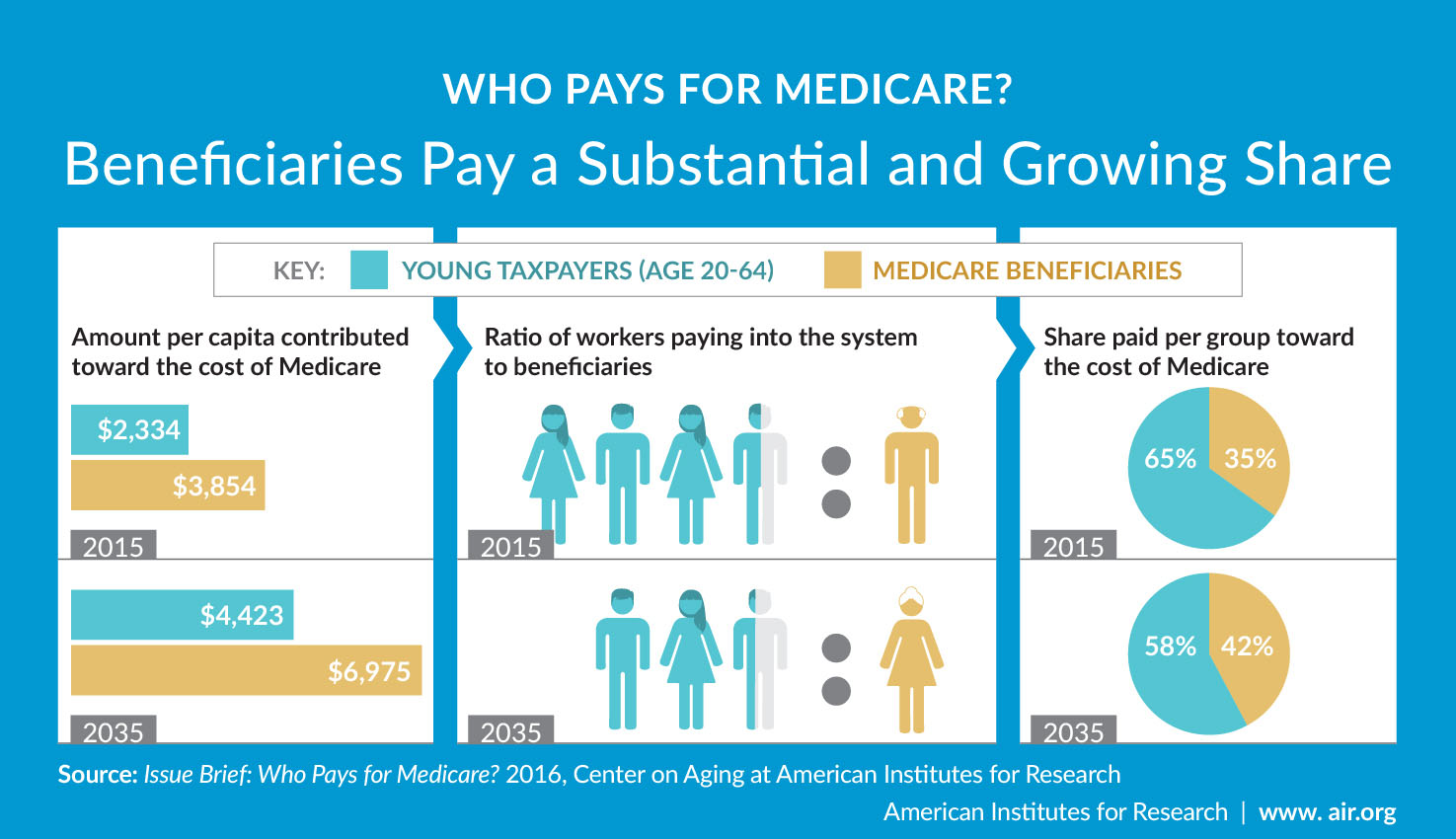Measures of Medicare's Finances Reconsidered: A Series of Briefs

The debate over Medicare’s future takes many forms. At its most basic, the issue is whether we can (or want to) afford Medicare. In addition, the debate is often inextricably linked to questions about financing—usually couched in terms of the burdens on current or future taxpayers. Too often these discussions take place in the absence of good information on how Medicare operates in practice and how its financing actually works.
This series of issue briefs addresses key questions concerning the future of Medicare and how that will affect taxpayers and beneficiaries over time.
Who Pays for Medicare? (PDF)
The first issue brief examines on an annual basis how much taxpayers and beneficiaries each contribute to the costs of the Medicare program and how that will grow over time. It uses the basic principle that Medicare is a “pay as you go” program, funded each year by current taxpayers. And it recognizes that the program has multiple sources of financing and multiple payers of the various components.

How Much Will Medicare Costs Affect Taxpayers Over Time? (PDF)
The basic measure described in the first brief is then used to examine how this will affect taxpayers in this second brief.
A "Lifetime" Measure of Medicare’s Value (PDF)
The third brief addresses what beneficiaries will have paid into the system over their lifetimes and compares that to the value of the benefits they will receive. We are somewhat skeptical of the value of this measure; recent versions have been cited frequently, but often in ways that are interpreted incorrectly. Our approach properly aligns the financing sources with the benefits received—a flaw in other commonly cited versions.
Can We Afford Medicare? (PDF)
The final brief combines the results to indicate where the measures differ in the information they provide. In particular, the differences between the pay as you go view and the lifetime contributions view are important to explore.
Future Research and Policy Implications
Translating the findings of these measures into policy prescriptions requires further value judgments such as, what is an appropriate burden or what should beneficiaries be expected to pay. Will Medicare be affordable over time? Should beneficiaries be asked to take on more of the costs of the program as some have argued? And if so, how should those burdens be distributed? We have tried to frame the papers to inform this debate but do not expect that the results on their own are sufficient to settle the issue. Rather it is our hope that the debate on how the future burdens of Medicare should be distributed will be better informed from the analyses we have developed.